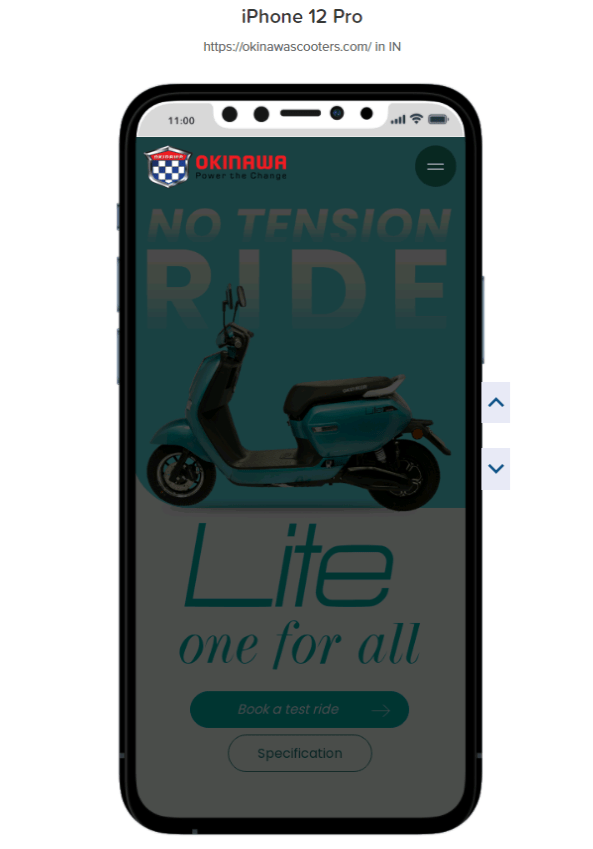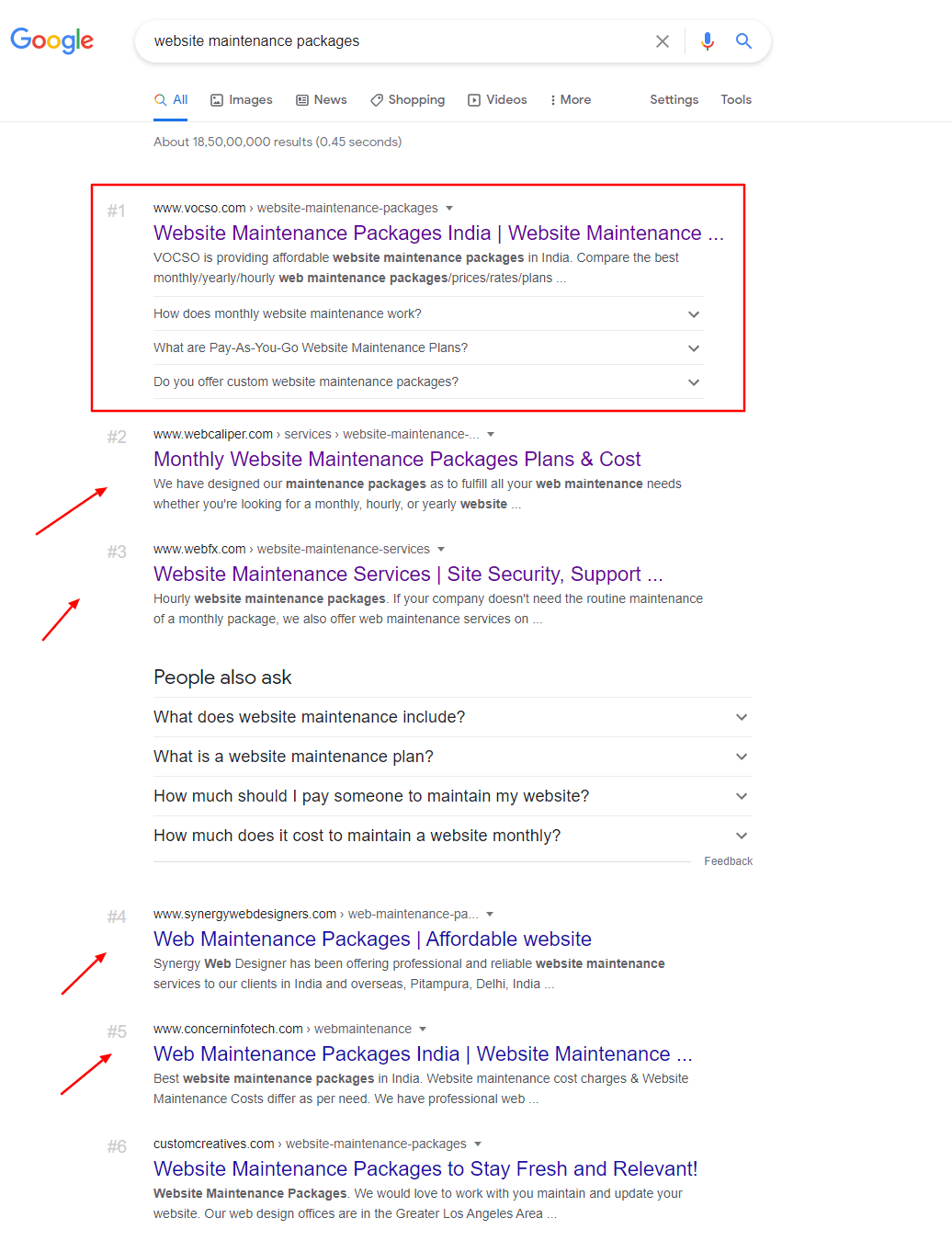Popular Tools by VOCSO
In order to remain competitive within the market, it’s imperative that you create both appealing and meaningful content. What better way to do so than with a management portfolio that helps you to select and filter out surplus or redundant material? It should flow fluidly and retain attention, whilst being able to market and sell to your audience. Promoting your business with branding or merchandising is also another aspect to bear in mind. Seek expert advice to make the most of your campaigns.
Table of Contents
#1. Don’t lose the good stuff, by feeling you need to create new words
A neo site doesn’t necessitate trashing existing content: merely reinventing or configuring it if required! Ensure that a comprehensive validation of this is undertaken, to run through and decide what to retain and purge. Who knows – you may just end up uncovering something magical en route too? Most of such content can subsequently be migrated to your new site, allowing you to categorise various material and commence your new revitalised journey.
There may be campaign landing pages, event microsites, SEO based articles and otherwise that requires exporting to the new site. Be mindful that not everything will be associated with the main navigation pathways, so it’s worthwhile checking. Moreover, also consider Google Analytics funnels, goals or events tracking which may have been configured on your current site. These will need to be revised for the new website.
It’s important that prior to embarking upon planning your new site, what you’re removing is only the extra or poor stuff – and nothing good. This is irrespective of whether you feel bored with your old content, as it may still be functional and serve a purpose. Ensure what requires salvaging before making any modifications or deleting material. You should also carefully review customer experience as well as conversion rates. Why not create an opinion poll or survey asking a sizable and reliable audience sample about such areas that you may have inadvertently overlooked yourself.
By creating an XML sitemap of your current site, you can transform this into a spreadsheet and usefully deploy it for ranking and review purposes. You can then check your existing content by applying a green/amber/red categorisation system to decide what can be retained, needs improving or simply can be disregarded. This is a neat distributable resource within your agency during project infancy.
Verify your site’s analytics: which pages are generating the most search traffic? Review content that is affiliated with your sections, such as PDF downloads and then try shifting it elsewhere. Does this now make a difference? We often become accustomed to viewing the same content repeatedly, as it hasn’t been moved or tweaked. Boring or outdated aesthetics can cause fidelity material to be wasted. These may be missed sales opportunities with power and keywords. Copy and paste your content into a fresh separate document for an impartial review. Then use this as a future reference for your new plan, embarking upon an inception turbocharged with fresh ideas!
#2. Writing Smashing Sales Content
Savvy prospective customers possess a vast purchasable product selection with various buying methods too. A site copy hack is to write candidly and genuinely. Refrain from overwhelming visitors with excess indigestible material. You should focus on keeping it straightforward and engaging. This is an ideal method.
Jot down what you’re selling simply – be bluntly factual. Then introspect the purpose that it serves. Draft another version that adds meaning and reasoning, then question yourself again ‘how and what does this do?’ Repeat this process until you’re able to hone your content. This functions as a brainstorming framework with your marketing and sales team. Persist for as long as possible. Avoid over analysing at each stage: simply be spontaneous and observe where it leads you to. This is better as it keeps your focus on what’s needed, rather than decorating it with futile sales jargon. You connect your business to customers by merely deciphering your product or service pitch into something crisp and endearing for them.
#3. A Sitemap for Success
A sitemap is synonymous with content planning and organises your material in a coherent manner, mainly outlining the association between this and your site pages.
Your agency will assist you to organise content and include user experience within the discovery cum design phases of the project. By creating a basic sitemap, you can expedite this process. This can be a basic compilation or comprehensive visual layout; whatevers suits you.
Here’s a great array of visual sitemap tools:
An Excel spreadsheet is simple, flexible and instant – nothing can really compare. Just create a new sheet, begin adding main sections from the first column, then incorporate the child pages into the second column, etc.
Focus only on what you’re fully aware of and comfortable with. Refrain from indulging and preempting any user journey content at the moment, as you’re not compiling your final sitemap just yet. Leave this to your agency to take care of. All you need to ensure is that the sitemap is formulated and integrated with the content landscape for your new site. Collect everything and don’t omit anything, preparing a great inception for your elected agency to interpret and experiment with. Sorted!
#4. What are your Customers Looking For?
Upon reviewing your sitemap, we recommend that you avoid being over zealous and scrutinise user journeys. Although this is a given, neither does it mean that you should overlook them entirely either. Every user responds differently, typically across different visit instances. You may have already considered the product characteristics, which is ideal to incorporate user trends. Record and collate anything that you have and then collaborate with your sales and customer service teams. At this stage, the verbatim script isn’t required, however to outline your audience’s requirements, parallel to your content planning. Your customers will be your stakeholders for the project’s success.
#5. The Never-ending Story
Content demand is (unfortunately) relentless. Your audience will grow and adapt over time, especially from an SEO perspective. Keywords and search terms users deploy often change, which means that you need to be cognizant of how your audience perceives the content. Sites can become overladen with time, hence regular audit reviews are imperative.
Among other things, SEO is important and will drive pertinent traffic to your site, helping you to outshine your rivals. Nevertheless, you should first consider:
- Are there keywords within my content that my audience actually uses?
- Which areas tend to garner most interest on social media?
- Is my internal linking functional and efficient?
- Which sections are popular and perform well with respect to user experience?
These answers will equip you with insights on what is required to enhance your site performance and customise content to substantiate this. Focus on content arenas that your audiences appreciate, with common keywords. This’ll help you to achieve your goals sooner. Collaborate with your team and regularly review the compass, defining your aim. When you’re clear about your current state, progress and objective, you’ll be able to integrate this knowledge into an action plan:
- What SMART objectives do you aspire to achieve and the actions required to do so?
- What content do you already have ready to use?
- Gauge and analyse your data
- Update your content marketing plan and then execute…
#6. Get your content written by an expert or enthusiast who demonstrably knows the topic well
In order to achieve high(er) rankings and ratings during searches, appropriate SEO deployment is required. This helps to conquer what should be your intended online market share or space. Keywords also play an important role in doing this as well. Creating an effective landing page, with the perfect imagery/graphics and text all play a part in engaging visitors. This subsequently promotes lead generation and retention too. Tap into a customer’s mind with emotive elements by applying psychological buying triggers to prompt them to do something. This could be as simple as tapping a CTA button to express interest or make an enquiry to actually purchasing a product/service! Even enrolling on free trials is a good start…
Apart from establishing your own brand identity by stating what’s your purpose you deliver this, we need to evoke as well as address the customer’s question – why? Why should they bother visiting your site and what’s in it for them: how will they benefit from or by doing such.
Firstly, make your site easily visible and discoverable via search engines by harnessing the power of keywords. Then only you can be found by others! This is often accomplished by applying competitive copywriting to configure all content in the right places. Secondly, combine this with marrying up your product lineup with your customers’ needs. Often this results in them becoming brand ambassadors for you. Now they can advocate on your behalf, particularly with stellar reviews and testimonials. Thirdly, this structured approach also entails all rights and royalties just for you, using a ghostwriter to honour you with the credit. Take ownership for all content and be assured that it’ll never be reused.
Scaling from various industries, including health cum fitness, education, retail, automotive, environmental, media, financial, food and drink (to name but a few), everything has its respective niche category. Authenticate such material to ensure that it really delivers great and promising results. Make it successful and add to this with understanding your client requirements, empathising with their concerns. Essentially, you give them EXACTLY what they’re looking for and desire. How can you solve this for them?
Delegating this task to just anyone won’t work. Sure, you may receive your ‘finished’ work, ready for publishing in a timely manner, however how effective will it really be? Would you have even had the opportunity to converse with the person working on your project? How will this be personalised to your required specification? These are just some of the elements to really add that much needed oomph to your site:
- Keywords, Long tail phrases
- Catchy and H1/2 headlines
- Bullet lists
- Site URL, title tags and meta descriptions
Moreover, get yourself noticed with customised, bespoke and personalised templates to give your rivals a run for their money, using:
- SEO / Keyword research
- Web content strategy; content writing/editing/proofreading
- Site copy refreshers (at least once every 5y is advisable)
#7. Make sure the content is free from spelling or stylistic issues
If you’re looking to write grammatically correct and appropriately styled content, then you should consider using an adept grammar tool to fulfill your particular requirements. Poor grammar and spelling are poorly reflective of your business, often hurting its credibility to an unthinkable extent – greater than you’d certainly expect, anyway.
Badly written content with grammatical, spelling and typo errors will shake the trust of readers. It’ll also discourage them from revisiting your site or even considering purchasing anything from your brand. Furthermore, grammar is an imperative qualitative content factor and a lack of this can impact your search engine rankings. For this reason alone, businesses often use grammar checker tools to enrich their online content.
There may be certain key features you seek when looking for a corrector tool, offering solutions to enhance what you write. Be it for specific written settings or applications, such as blogs, essays and so on, punctuation and wording will often be on the agenda. These should always be under your radar.
#8. Make sure the content displays well for mobile devices when viewed on them
There’s often a misperception that a responsive outlay which is scaled to fit portable devices is sufficient. Unfortunately, this couldn’t be further from the truth! Whilst this does hold true to an extent, appealing content is additionally advised.
The use of heatmaps to observe user trends when viewing mobile pages is very interesting. There are skimmers, wordwise readers and alternators between both methods. So what do we need to do? Well it’s simple – target all audiences by deploying a little variety of content to fit all these three categories! Introducing the ‘bite, snack and meal’ approach which produces a framework to suit all types of reading habits:
- Bite: merely a catchy headline which entices readers to proceed on to read your content
- Snack: a summary or even conclusion incorporating the overall gist of your article
- Meal: the entire material in its full glory, with the former two elements leading onto this
This somewhat ‘pyramidal’ approach is often effective and content chunking to create digestible pieces is always a bonus. It also augments retention and interest in what you have to say. Structured smaller ‘snippets’ keep dosing readers with more of what they want, without overwhelming them. Using the following tactics can help to implement this easily:
- Short paragraphs
- Whitespace
- Subheads
- Summary
- Images
- Lists / bullets
- Styled formatting (bold, italics)

Short and snappy titles always hit the emotive aspects of visitors much better, especially when analysed. This helps to achieve better CTRs and moderating paragraph length also has the same compounding effect. Smaller and shorter words imbibe simplicity which ultimately is the key to create a great and memorable reading experience. Even the scholars and experienced readers will thank you for this! There are apps out there that can help to transform complex content into such simpler terms, truncating such convolution. Similarly, you can simplify your phrases with one or two words to achieve the same effect.
Imagery can always add to the appeal (be it stock images or otherwise). Bear in mind that graphical representations need to be easily visible and not overly complex. After all, anything which you do add should only be beneficial and add meaning to your site: needs to be purposeful.
Briefly revisiting bullet points and paragraphing, these help to create whitespace. This phenomenon is often useful to literally just give people some eye space to ‘breathe’. Sounds elementary I know, however often underused and certainly underrated too! Just ensure that this strategy is used carefully to avoid introducing abrupt breaks, as this can throw readers off their focus. Something as simple as Google Translate can help you to detect this and avoid suchlike.
Simply preview to test how your piece flows and ensure that all formatting as well as content is fluid. Then you’re pretty much ready to go! Dedicated reading apps can also help to verify this on your behalf.
#9. Does the content provide substantial value when compared to other competitors pages in search results?
This all boils down to one main factor…Google algorithms and more importantly, SEO. Be it fresh content, search query string unified, analytical, interpreted referencing, keyword summary headlines, anti SERP clickbait listing and distributable publish worthy material, all satisfy one major criteria: appeal.
There’s little point in being compelled to search multiple sites just to find your answer or have meaningless references without any real analysis. Furthermore, authenticate your work with certified data sources, focussing on your speciality only. Information should be credible and not cast doubt leading to abandonment in search of another site.

Proofreading and typographical formatting along with grammar checks are imperative (as aforementioned). Your content should be in situ, meaning that it doesn’t often link up to other sites or redirects. The same applies to monetisation ads and sizing on mobile devices – no support, incompatibility issues or distracting material please!
Information should be sustainable and written with good intentions for a plausible cause. It should also hold that value to ensure that comparatively, it is at least on par if not outperforms other competitors. Otherwise, you stand to lose your ground in the online marketplace.

#10. Measure Engagement with Google Analytics for Ongoing Success
Be it for sales or marketing, analysing your engagement metrics is imperative for you as a business owner to ensure that this performed regularly. Only then you’ll know what exactly is going on, where, how, when and why. These performance indicators include bounce rate, page visits, mean visit time and so on. The issue is that these don’t factor the audience volume, hence such proportions can be equivocal. Such stats & data can be artificially skewed, especially when new people visit your site. For better analysis, why not use Megalytic which gauges traffic and expresses engaged visits over time for ideal trend retrospection as well as extrapolation.
Conclusion
In summary, your content needs to be relevant, accurate, concise, meaningful, appealing, mobile optimised and planned to achieve your objectives in engaging audiences. If you hit the right buttons, you can easily boost your brand awareness and value. With increased visibility, you’ll be more likely to take advantage of a larger market share to compete against and perform well around your competitors. This is the best way forward for a long term success strategy.


















